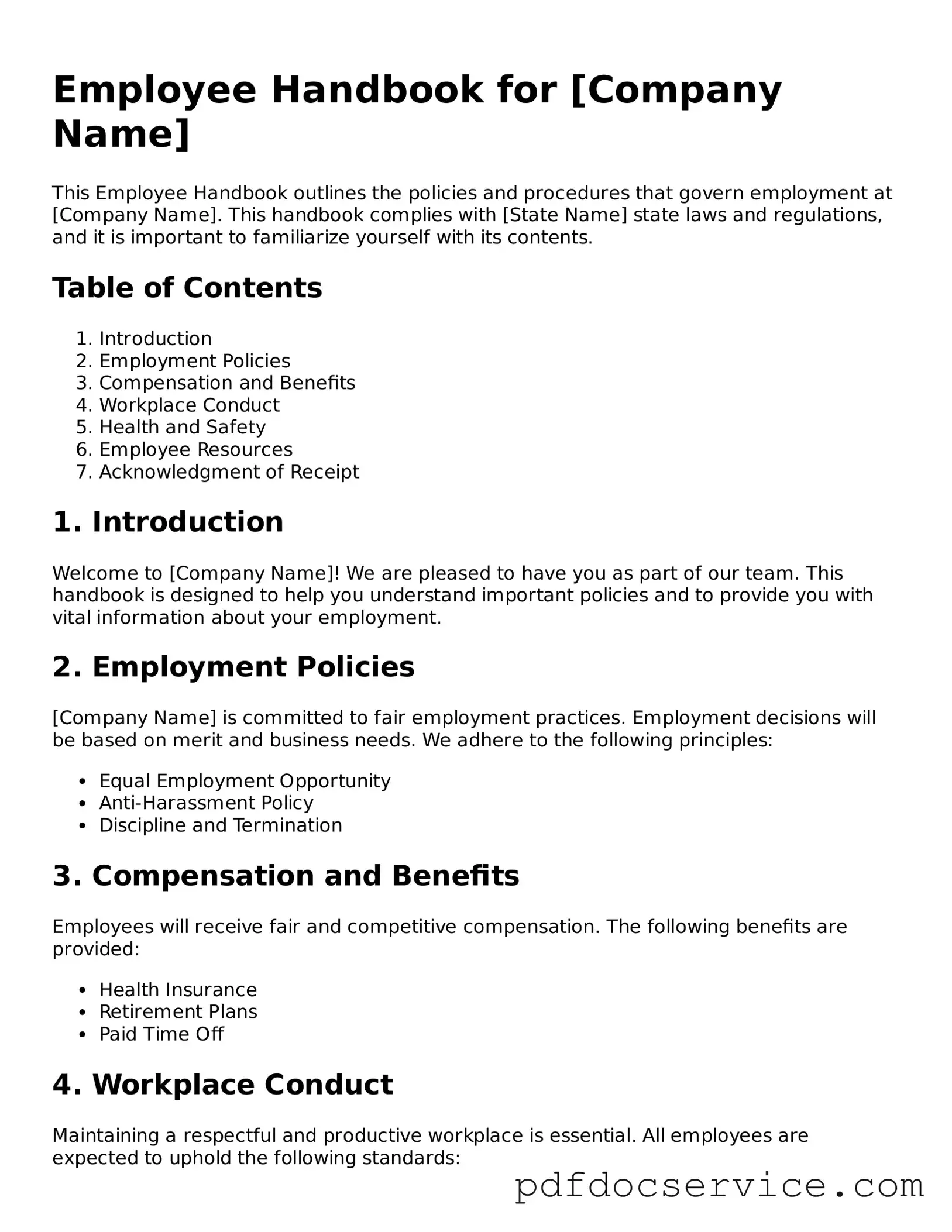Blank Employee Handbook Form
The Employee Handbook form serves as a crucial document that outlines a company's policies, procedures, and expectations for its employees. This handbook not only provides essential information about workplace rules but also fosters a clear understanding of employee rights and responsibilities. By establishing a solid foundation for communication, the Employee Handbook helps create a positive work environment.
Open Employee Handbook Editor
